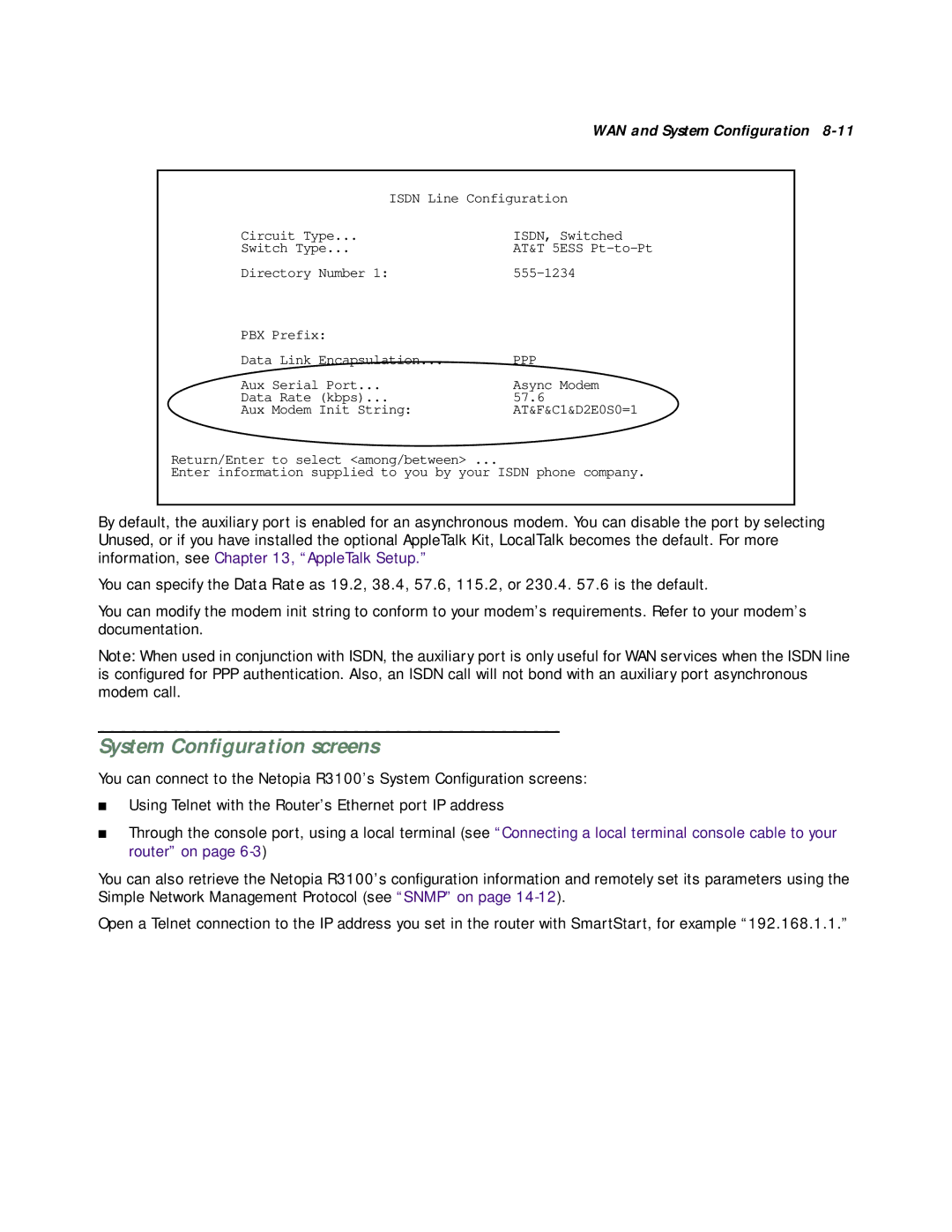
WAN and System Configuration 8-11
ISDN Line Configuration
Circuit Type... | ISDN, Switched |
Switch Type... | AT&T 5ESS |
Directory Number 1: | |
PBX Prefix: |
|
Data Link Encapsulation... | PPP |
Aux Serial Port... | Async Modem |
Data Rate (kbps)... | 57.6 |
Aux Modem Init String: | AT&F&C1&D2E0S0=1 |
Return/Enter to select <among/between> ...
Enter information supplied to you by your ISDN phone company.
By default, the auxiliary port is enabled for an asynchronous modem. You can disable the port by selecting Unused, or if you have installed the optional AppleTalk Kit, LocalTalk becomes the default. For more information, see Chapter 13, “AppleTalk Setup.”
You can specify the Data Rate as 19.2, 38.4, 57.6, 115.2, or 230.4. 57.6 is the default.
You can modify the modem init string to conform to your modem’s requirements. Refer to your modem’s documentation.
Note: When used in conjunction with ISDN, the auxiliary port is only useful for WAN services when the ISDN line is configured for PPP authentication. Also, an ISDN call will not bond with an auxiliary port asynchronous modem call.
System Configuration screens
You can connect to the Netopia R3100’s System Configuration screens:
■Using Telnet with the Router’s Ethernet port IP address
■Through the console port, using a local terminal (see “Connecting a local terminal console cable to your router” on page
You can also retrieve the Netopia R3100’s configuration information and remotely set its parameters using the Simple Network Management Protocol (see “SNMP” on page
Open a Telnet connection to the IP address you set in the router with SmartStart, for example “192.168.1.1.”
